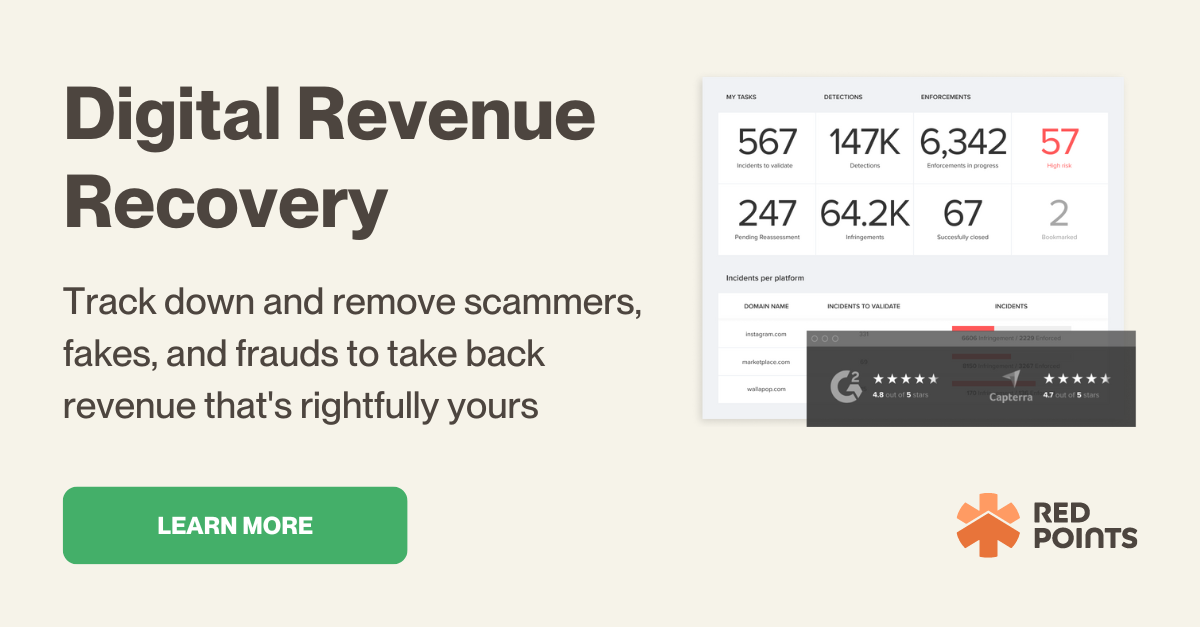Price consistency is important for brand owners to maintain across every channel their products are sold. Without it, consumers may be confused and frustrated by ever-changing prices, and brands can lose sales to low-priced reseller products. These practical tips to enforce retailer prices will help brand owners maintain this consistency and protect their brand revenue and reputation.
What is retail pricing?
Products don’t come with a one-size-fits-all price structure. For any given product, there are production costs to the manufacturer, a wholesale cost to resellers, and the final cost to customers. A product’s retail price is the cost customers will pay when buying it at retail stores, both online and within brick-and-mortar shops.
Retail pricing is the process all business owners must go through to determine how much their products will cost in stores. It’s one of the most essential steps in launching any new business or product, as the retail price will determine profits. The final retail price of a product must cover the production costs and net a proper profit margin, and that requires a pricing strategy.
Brand owners should use a pricing strategy to not only set the retail pricing for their products but to enforce that price as well. Consistent pricing across various marketplaces is essential for brands to maintain a cohesive online presence, and avoid having to compete with resellers. To ensure consistent pricing and enforce retailer prices, brand owners should also create a distributor pricing strategy.
Why is building a distributor pricing strategy so important?
A distributor pricing strategy can help brand owners keep consistent pricing on their products across all of their sales channels and partners. Why is this so important for brand owners?
Resellers can put brands’ reputations and revenue at risk by slashing product prices and creating price discrepancies in the market. Brand owners can avoid having to compete against their own products and get beat out by resellers by building a distributor pricing strategy.
Key reasons for brand owners to enforce retailer pricing through a distributor pricing strategy:
Avoid unfair pricing diverting customers
Without the proper restrictions in place, resellers on the gray market can easily gouge product prices and offer deals brand owners simply can’t match. Brand owners may be forced to compete against their own products being sold by resellers as customers opt for the best deals online.
Prevent brand erosion
Inconsistent product pricing doesn’t just hurt brand owners’ bottom lines; it puts businesses at risk of brand devaluation. Seeing a product listed for multiple prices online can be confusing for customers, and may even raise red flags of counterfeits on the market. Brands need consistent product pricing to maintain brand cohesiveness and show that they deliver the same value to all of their customers.
Prevent revenue loss
Brand relationships and loyalty are extremely important to many online shoppers these days, but one thing still reigns supreme: deals. A brand could have the most loyal customers and still lose sales to a reseller price-gouging their products and diverting sales. Enforcing retailer pricing ensures that brand owners aren’t losing revenue and customers to these resellers.

5 Tips to deal with reseller price violations
No matter what precautions brand owners take when it comes to ensuring pricing consistency for their products, it’s still possible that price violations will occur. It’s vital to have a plan in place to deal with reseller price violations when they do happen.
1- Determine the scope of the problem
Price violations can occur on the small scale, with one or two resellers pricing products inaccurately, or on the large scale, with thousands of violations. It’s important for brand owners to fully analyze the current state of their price violation problem. This way, they can plan for the time and resources they will need to address the problem.
2- Build marketplace relationships
Many marketplaces have systems in place to help brand owners report price violations, but they aren’t always effective. It can take quite a long time to file a report, and even longer for it to be reviewed and approved. That is unless brands are able to form working relationships with these marketplaces to help curb these price violations and preserve their brand.
Working with marketplaces, building relationships with their service teams, and staying consistent in reporting violations can make this process much more efficient.
3- Notify violators
It can be frustrating to find price violations as a brand owner, but it’s important to remember that violations can occur for many reasons. It could just be that a reseller made a mistake and priced a product inaccurately, and that’s not worth losing a good business relationship over.
If a brand owner identifies a price violation, they should reach out and notify the reseller immediately. Simply notifying the violator can be far easier than sending an official DMCA takedown notice or reporting them to a marketplace or web host.
Searching multiple marketplaces and sites to identify and take down product price violations can be extremely time-consuming. The scope of a brand’s pricing issues is many times likely to be far too expansive to handle manually. Investing in automated MAP monitoring software can solve this problem and offer an encompassing approach to removing price violations.
4- Automate the process with a MAP monitoring software
The Red Points’ MAP monitoring software is one such service that scans various marketplaces for inconsistent pricing and automatically sends notices of violations. This gives brand owners the time to focus on proactive pricing strategies with the peace of mind that they are being enforced.
5- Enforce your price
Brand owners can’t afford to ignore price violations. It isn’t enough to set pricing policies and hope resellers will abide by them. Pricing violations need to be monitored for and addressed with every applicable reseller, whether there is a current issue or not. It’s far easier to proactively monitor your channels and protect against violations rather than deal with numerous violating resellers at once.
What’s next
All brand owners need to enforce retailer prices to maintain pricing consistency across all of their sales channels. With the number of resellers in the Ecommerce market, monitoring every channel and seller can be impossible to accomplish manually. Red Points can help automate this process and help brand owners enforce pricing in their sleep.
See how you can automatically monitor the gray market with Red Points’ Marketplace Monitoring Services.






